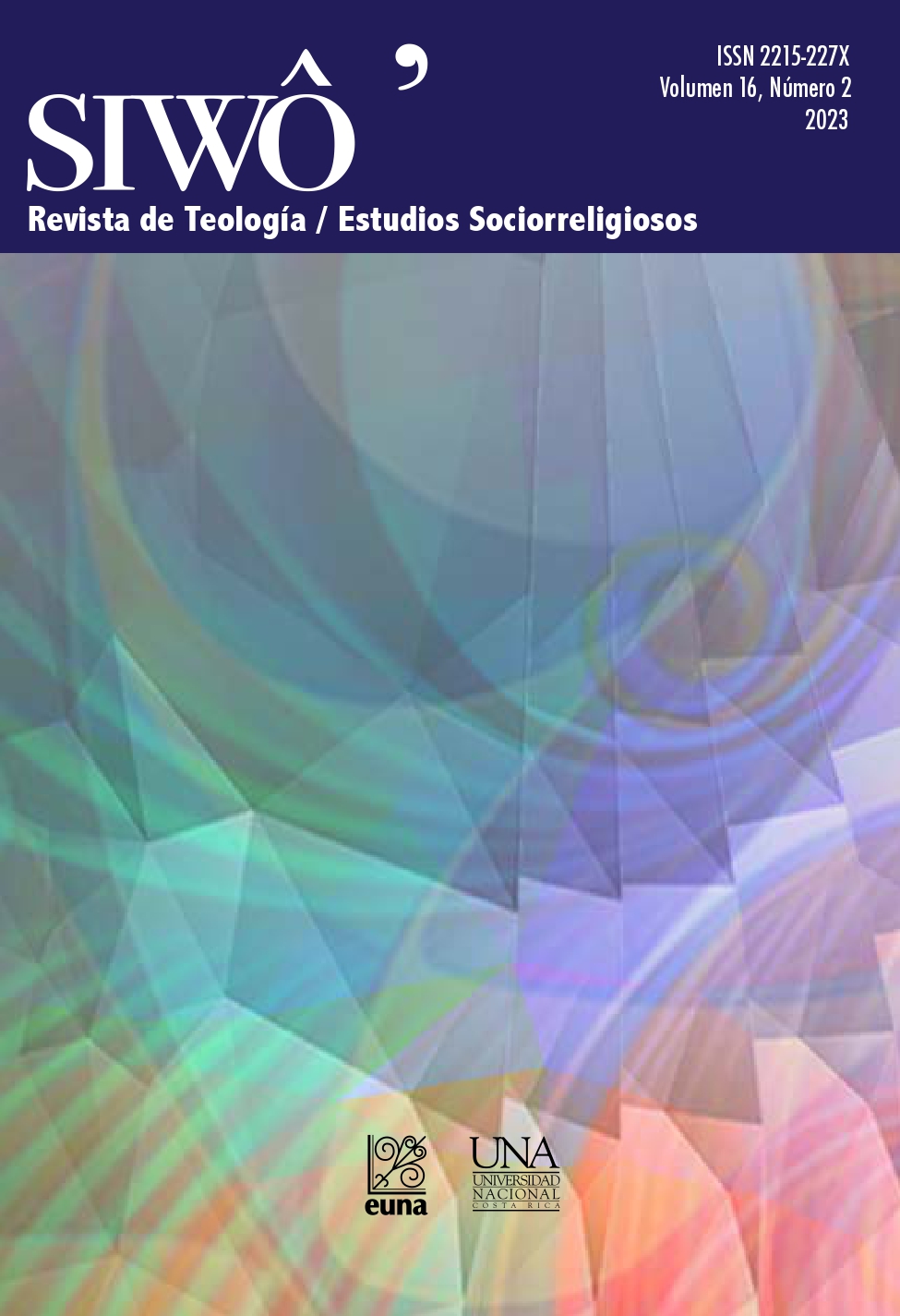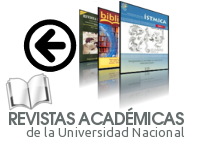Hermeneutics of liberation from Mesoamerica: Listening to the Voice of the Jungle
DOI:
https://doi.org/10.15359/siwo.16-2.3Keywords:
Caribbean, Desert, Ecology, Eisegesis, Latin American hermeneutics, MetaphorAbstract
A social position is proposed to carry out a biblical reading where the Caribbean, as a vital space, of the worlds that embrace its waters, is included. Croatto called this exercise eisegesis and proposed this concept as a way to bring liberation struggles into exegesis. The point is that many of the issues that are pressing for the Latin American and Caribbean communities have no reference in the Bible, one of those issues is the wealth of life that nourishes us. To think of the Bible is to think of the desert and sometimes the waters of the Mediterranean (especially the Acts of the Apostles). But the Bible does not know the jungle, it knows the desert, but not the thicket of mountain life. For this reason, and making a series of clarifications to build this position, we conclude with three great metaphors: the tangle, symbiosis and putrefaction.
References
Alonso Schökel, L. (1980). Profetas I. Cristiandad.
Alonso Schökel, L. (1994). Salmos. I (salmos 1-72) (2.aed., Vol. 1). Editorial Verbo Divino.
Alonso Schökel, L., Collado, V., & Morla, V. (1999). Diccionario bíblico hebreo-español. Trotta.
Biblia de Jerusalén. (2018). Nueva traducción. Desclée De Brouwer.
Camacho, F. (1987). El evangelio del Reino: las bienaventuranzas del evangelio de Mateo 5.3-10. Ediciones Cristiandad.
Comisión Centroamericana de Ambiente y Desarrollo. (10 de diciembre de 2019). Alianza cinco grandes bosques de mesoamérica, iniciativa ambiental centroamericana. https://www.sica.int/noticias/alianza-cinco-grandes-bosques-de-mesoamerica-iniciativa-ambiental-centroamericana-lanzada-en-la-cop25_1_120718.html
Concilio de Granos, U. (2023). Etanol, uso y beneficios del etanol. https://grains.org/lta/buying-selling/etanol/uso-y-beneficios-del-etanol/
Costa Rica 21. (2017). Bosque-Tropical-Lluvioso. https://www.costarica21.com/Bosque-Tropical-Lluvioso-s.html
Croatto, J. (1997). Simbólica cultural y hermenéutica bíblica. Ribla, 26 La Palabra se hizo india.
Croatto, J. S. (1984). Hermenéutica bíblica : para una teoría de la lectura como producción de sentido. Ediciones la Aurora.
Dussel, E. (2004.). Transmodernidad e interculturalidad (Interpretación desde la Filosofía de la Liberación). En R. F. Betancourt, Critica intercultural a la filosofía de la liberación. Trotta.
Evans, C. A. (2011). Matthew. New Cambridge Bible commentary. freeworldmaps.net. (2005-2021). https://www.freeworldmaps.net/es/americacentral
Gallardo, H. (2009). Crítica social del evangelio que mata. Introducción al pensamiento de Juan Luis Segundo. UNA/EECR.
Hagner, D. A. (1993). Matthew 1-13. Thomas nelson Publishers.
Hernández, L. (2014). Ciclos de nutrientes en bosques húmedos tropicales. En L. Hernández, & N. Valero, Desarrollo sustentable del Bosque húmedo tropical. Características, ecología y uso. Con énfasis en Venezuela. (2a. ed.).Fondo Editorial UNEG.
Kraus H.-J. (2014). Los salmos. volumen ii salmos 60-150 (2.a ed., Vol. 2.). Ediciones Sígueme.
Luz, U., & Olasagasti, M. (2006). El evangelio según San Mateo. Vol.1. (2.aed.).Ediciones Sígueme.
Malina, B., & Rohrbaugh, R. (1992). Social-Science Commentary on the Synoptic Gospels. Fortress.
Mena Oreamuno, F. (1995). “El concepto de ‘acepción de personas’ en Santiago”. En Vida y Pensamiento, Vol. 15 N.° 1. SEBILA.
Mena Oreamuno, F. (2010). Los tejidos del caos: hermenéutica bíblica desde América Latina. SEBILA
Mora, A. (2001). La identidad de nuestra América. Facultad de Filosofía y Letras.
Prigogine, I. (1997). El fin de las certidumbres. Editorial Andrés Bello.
Reina Valera. (1960). Biblia. https://www.biblia.es/reinavalera-1960.php
Rodríguez, A. (2007). Diálogo exégesis-teología. Perspectiva exegética. Estudios Bíblicos, 223-251.
Salido, J. (junio de 2015). Proyecto Mesoamérica. Respositorio CEPAL:https://repositorio.cepal.org/handle/11362/38426
Segundo, J. L. (1975). Liberación de la teología. Carlos Lohlé.
Segundo, J. L. (1988). Revelación, fe, signos de los tiempos. Revista Latinoamericana De Teología, 5(14), 123-144. doi: https://doi.org/10.51378/rlt.v5i14.6124. Servicio de Información
Agroalimentaria y Pesquera. (29 de septiembre de 2022). El maíz, una creación cultural que hace inseparable al hombre y la planta. Gobierno de México: https://www.gob.mx/siap/articulos/el-maiz-una-creacioncultural-que-hace-inseparableal-hombre-y-la-planta
SINAC. (2023). Parque Nacional Braulio Carrillo. https://www.sinac.go.cr/ES/ac/accvc/pnbc/Paginas/galeria.aspx
Society, W. C. (s. f.). Wildlife Conservation Society. Los 5 Grandes Bosques de
Mesoamérica: https://programs.wcs.org/gcf-the5greatforests/es-es/
Tenorio, R. (2007). Parque Nacional Braulio Carrillo, un viaje a la Biodiversidad. http://www.cientec.or.cr/exploraciones/ponencias2007/RodolfoTenorioBraulioCarrillo.pdf
Watts, J. (1985). Isaiah 1-33 (Vol.24). Word Books Word Biblical Commentary.
Wikipedia. (2022). Áreas metropolitanas más pobladas de América Latina. https://es.wikipedia.org/wiki/Anexo:%C3%81reas_metropolitanas_m%C3%A1s_pobladas_de_ Am%C3%A9rica_Latina
Additional Files
Published
How to Cite
Issue
Section
License
Política propuesta para Revistas que ofrecen Acceso Abierto
Los autores que publican en esta revista están de acuerdo con los siguientes términos:
1. Esta revista provee acceso libre bajo licencia Creative Commons Reconocimiento-NoComercial CC BY - NC. Usted como persona autora conserva sus derechos de autor. Esta licencia permite que otros remezclen, adapten y desarrollen su trabajo sin fines comerciales, siempre y cuando le den crédito y licencien sus nuevas creaciones bajo los mismos términos
2. Los autores pueden establecer por separado acuerdos adicionales para la distribución no exclusiva de la versión de la obra publicada en la revista (por ejemplo, situarlo en un repositorio institucional o publicarlo en un libro), con un reconocimiento de su publicación inicial en esta revista.
3. Se permite y se anima a los autores a difundir sus trabajos electrónicamente (por ejemplo, en repositorios institucionales o en su propio sitio web) antes y durante el proceso de envío, ya que puede dar lugar a intercambios productivos, así como a una citación más temprana y mayor de los trabajos publicados (Véase The Effect of Open Access) (en inglés).











